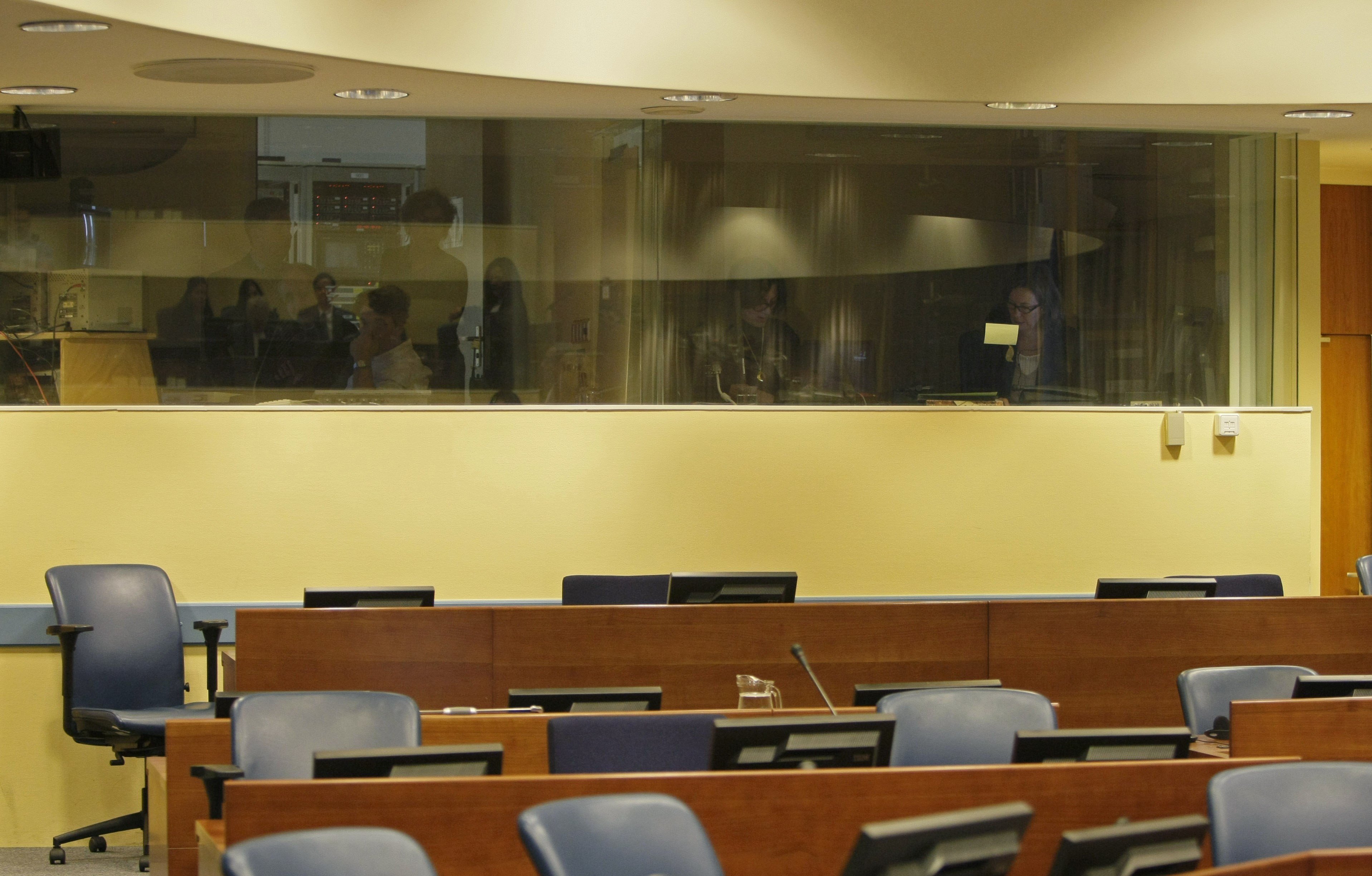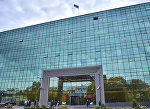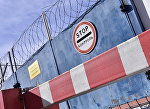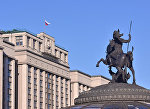MOSCOW, October 16 - RAPSI, Ingrid Burke. Accused genocidaire Radovan Karadzic began the first day of his defense case with scathing indictments directed at mass media and the international community for conspiring against him specifically and the Serb people in general by way of a campaign of misinformation that permeated the Bosnia and Herzegovina (BiH) war. His defense proceedings began Tuesday at the International Criminal Tribunal for the former Yugoslavia (ICTY) in The Hague.
Karadzic looked stoic and spoke eloquently as he took center stage at the start of proceedings. He recounted his youth and the development of his political awareness in a comparatively utopic Bosnia, where Muslims and Serbs not only tolerated each other, but together comprised a tight-knit community.
Throughout the course of his address, Karadzic reiterated the offensiveness of the negative light in which Serbs as a people were portrayed through the course of the war. He described as a “terrible misconception” and a “great injustice” the theory that the Serbs initiated the war in BiH charging that Serb-controlled areas throughout the country remained peaceful until provoked by Muslim forces.
According to his testimony, this image was both rendered and reinforced by an international community on a quest for a scapegoat, and a mass media willing to throw ethics and integrity under the bus for the sake of a good headline.
Main enemy # 1: An international community with a lust for blame
Karadzic describes the investigative efforts of the international community as having been tainted by an anti-Serb bias.
He went so far as to charge that members of the international community collaborated with Muslim police to the extent of having placed fake bodies (“android mannequins”), as well as the real corpses - retrieved from a nearby morgue - of people who had died of natural causes, at scenes of atrocities in order to create the appearance of a greater number of casualties.
Main enemy # 2: A media with no ethical boundaries in its quest to satiate a hunger for headlines
According to Karadzic, journalists were far more dangerous than NATO shells during the course of the BiH war.
Conjuring images of reporters posing civilians in front of barbed-wire fences or otherwise unnaturally doctoring scenes of devastation, Karadzic decried journalists for spreading blatant misinformation.
He describes having made the mistake of falling for the claims of this alleged smear campaign on numerous occasions, often lashing out and demanding explanations from his own forces for actions that they hadn’t actually taken.
On the Siege of Sarajevo
Karadzic insisted that, “Sarajevo is my city… every shell that fell on Sarajevo hurt me personally.”
According to an ICTY statement, the Siege of Sarajevo encompassed a three and a half year period between April 1992 and November 1995, wherein Republika Srpska forces encircled the city, while parts of it remained under the control of Bosnian forces. During the course of the siege, the city’s civilian inhabitants were forced to endure relentless sniping and shelling attacks.
Describing the siege in the context of the earlier prosecution of Dragomir Milosevic, the ICTY established one atrocity as notably unfathomable: “Of all the incidents in the campaign of shelling, the mortar attack on the Markale Market on 28 August 1995 was one of the most horrendous. The Trial Chamber found that the Markale Market was shelled by [Serb forces] with a 120 mm mortar, which killed 34 civilians and wounded 78.”
Central to today’s hearing was Karadzic’s allegation that the infamous Markale market shelling could not possibly have been carried out by Serb forces.
Toward this end, his first witness called was Russian Colonel Andrey Demurenko, who had served as Chief of Staff for the UN’s military forces in Sarajevo. Demurenko charged that he was blocked in his efforts to challenge a UN investigation placing blame for Markale squarely on the shoulders of Serb forces. Demurenko alleges that his claims that the investigation implied a shelling at Serb hands that contradicted the laws of physics were silenced with death threats.
Contributing to the nightmare that was the Siege of Sarajevo was the absence of sufficient amounts of food, water, and power to sustain the city’s population. Karadzic claims that any efforts he made to block the reach of humanitarian aid to Sarajevo were calculated on the basis of the likelihood that such aid was mixed with military supplies that would support Bosnian forces.
Overall, Karadzic cast Serbs as the victims, implying that any action taken by Serb forces was motivated by self-preservation. He described the atmosphere at the start of the war as one where anti-Serb hostilities were spiraling out of control, posing a genuine risk of extermination. Prior to NATO’s intervention, he charged that Serbs were already outnumbered 2:1 by BiH’s Muslim and Croat populations.
He closed with a menacing reminder that lies aren’t subject to a statute of limitations.
Karadzic formerly served as President of Republika Srpska and Supreme Commander of the Bosnian Serb Army. He has been charged by ICTY prosecutors with two counts genocide and various counts of crimes against humanity and violations of the laws or customs of war.
Karadzic spent years on the run from the ICTY before being arrested on 21 July 2008.



